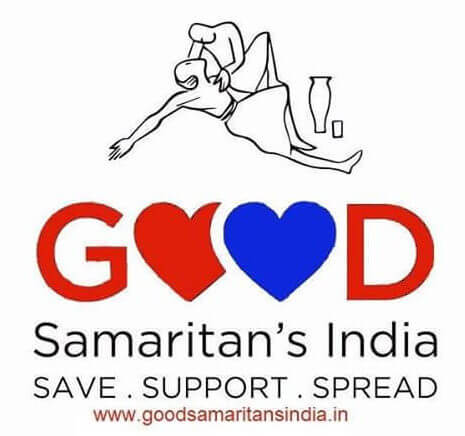What is a Good Samaritan?
If I have first-aid training, am I covered by Good Samaritan laws and protection?
Generally speaking, a Good Samaritan rendering first aid should reasonably avoid lawsuits and litigation if they provide:
- medical care which the first-aider reasonably believed,
- was necessary to prevent death or serious injury,
- depending on the aider’s perception of the total emergency situation,
- that the aider believed they could successfully undertake.
However, the answer, like most things involving the law, is “It depends.”
Background of Good Samaritan
The original Good Samaritan appears in the Bible when a man stops to render aid when no one else was willing to.1
In the United States, Good Samaritan laws and related laws appear not in one book, but in the legal code of every separate state – so 50 books. Getting advice on what to do on social media from someone who isn’t a lawyer and isn’t familiar with the laws applicable to your state is a bit like legal roulette. Thus, there is no perfect answer to this question, but we can come up with some right and left limits.
What is a trained first-aider and would-be do-gooder to do?
If a volunteer comes to the aid of an injured or ill person who is a stranger, the person giving the aid owes the stranger a duty of being reasonably careful. Generally, where an unconscious victim cannot answer, a Good Samaritan can help them on the grounds of implied consent. In best practices, if the victim is conscious and can respond, a person should ask their permission to help them first. Basic Red Cross first aid recommends saying, “Hi, I’m [name], I’m trained in first aid. Can I help you?” If the situation is more dire and requires immediate action, talking to the casualty while you’re rendering aid is probably still agood idea.
What you can & should always do:
- First, activate the EMS System – call 911. You should always call 911. If there are bystanders, point to ONE of them and direct that PERSON to call 911. A generalized call to “Call 911,” generally leaves untrained bystanders thinking someone else will have called and then no one does.2
- Ensure you are safe and can remain safe if you chose to render aid. Similarly, ensure the casualty is as safe as you can make them and attempt to keep them calm. Move if you need to: don’t stay in a collapsing building, a burning car, or in the middle of the street. That is not safe.
Then, if you’re going to render aid:
- Is the casualty conscious? Identify yourself and ask permission to help them.
- Act within your skillset. See massive hemorrhage? Use direct pressure or apply a tourniquet.
- Spin the MARCH pneumonic: Ensure airways are clear, ensure respiration is occurring, check to see, does the casualty have a radial pulse? See an unconscious casualty? Gently put them in the recovery position (if you have no concerns regarding spinal injuries) after ensuring you have evaluated the other issues in MARCH. Can you keep the injured person warm? Put a blanket or a coat under and over them.
“When good people do the right thing, we can all be a force multiplier for good.”
Good Samaritan Laws Generally
Most Good Samaritan laws were passed to cover medical providers helping outside their jobs in an emergency without the expectation of payment. The laws were NOT initially designed to protect everyday citizens who tried to do the right thing. Over time, and in most jurisdictions, the term has gained broader use, to apply to anyone stopping during an emergency providing care to a stranger appearing to be in need of immediate aid.
A Good Samaritan (GS) is one who renders aid in an emergency to an injured person on a voluntary basis, with no expectation of payment or compensation.
Generally speaking, bystanders have no duty to provide aid, even if they can help. Lawyers turn to a ginormous treatise when evaluating the law, and the applicable (and provocative) quote in this instance is: ”The law has persistently refused to recognize a moral obligation of common decency and common humanity to come to the assistance of another human being who is in danger.”3 But who wants to live in a world like that?
The purpose of Good Samaritan laws is to encourage bystanders to risk helping strangers in emergency situations.
Minnesota has taken the idea of the moral imperative to help and made it the law. If you can help someone at the scene of an emergency, knowing someone has suffered “grave physical harm,” you MUST help if you can do so without endangering yourself. Calling 911 appears to qualify.4This same approach is taken in Europe, for example in France & Germany, where you can be liable if you could help and didn’t where you face no risk to yourself or another, and at a bare minimum, you are required to activate the EMS system.5 Germany also requires each citizen to take a day-long first aid course before obtaining their driver’s license. Carrying a first aid kit with specified contents in cars is mandatory, and failure to have one with the mandated packing list is punishable by a fine.6
 Many states are expanding coverage beyond medical providers and making it clear that Good Samaritans cannot be sued. Georgia State’s law explicitly covers any person, medically trained or not, who renders emergency aid to victims without charging them to do so. It specifically provides complete protection from liability or civil damages.7 Similarly, in 2016, India passed a law protecting all Good Samaritans including protection from revealing your identity, immunity from lawsuits, protection from medical bills, protection from being required to testify, and a requirement on hospitals to accept patients brought in by Good Samaritans.8 These laws are steps in the right direction.
Many states are expanding coverage beyond medical providers and making it clear that Good Samaritans cannot be sued. Georgia State’s law explicitly covers any person, medically trained or not, who renders emergency aid to victims without charging them to do so. It specifically provides complete protection from liability or civil damages.7 Similarly, in 2016, India passed a law protecting all Good Samaritans including protection from revealing your identity, immunity from lawsuits, protection from medical bills, protection from being required to testify, and a requirement on hospitals to accept patients brought in by Good Samaritans.8 These laws are steps in the right direction.
Being a Good Samaritan is generally an affirmative defense to being sued after an adverse outcome. It doesn’t always mean you can’t be sued and won’t have to defend yourself; it means if the inured person decides to sue you, they won’t win if your defense is successful.
If you come upon a scene where there are casualties, and you think, “Wow, I’m in over my head,” or “I wonder if they’ll sue,” then you probably know what you should do, and less is probably more.
- Call 911 or activate your local EMS.
- After that, can you contribute to the solution while doing no harm?
- Can you put out flares, help with scene safety, or back unhelpful spectators away?
- If you have medical skills, use them, act reasonably and do no harm.
- Stay within your skillset: What are you trained to do, what can you do to improve the situation?
If you follow these guidelines, you’re probably going to be fine and could save a life.
Legal Definitions:What is emergency medical care?
In American Law, definitions are king and courts often turn to dictionaries to decide the fate of the people appearing in court.
In this instance, cases turn on the notion of what precisely is emergency medical care, who is qualified to provide it, and when they would have immunity from liability.
North Dakota, for instance, provides a good definition of what aid or assistance might be: “Any actions which the aider reasonably believed were required to prevent death or serious permanent injury, disability or handicap, or reasonably believed would benefit the injured or ill person, depending upon the aider’s perception of the nature and severity of the injury or illness and the total emergency situation, and that the aider reasonably believed the aider could successfully undertake.”9
Many states have similar GS laws, where so long as the would-be rescuer renders
- emergency care,
- at or near the scene of an emergency,
- without expectation of compensation,
- in good faith,
they are not liable for any civil damages unless they are grossly negligent.10
If a would-be rescuer renders aid that constitutes intentional misconduct or gross negligence, then they may find themselves named in a lawsuit. But that’s unlikely to happen because if you stopped to help, you wouldn’t intentionally do something wrong. Gross negligence generally includes acts or omissions falling short of intentional misconduct which nevertheless show a failure to exercise even slight care or any conscious interest in the predictable consequences of the acts or omissions. It would seem most readers of this blog, or humans interested in this topic would be exercising a great deal of care – that’s why you’re getting trained.
If we break down Oregon GS laws into its constituent steps as a representative example, it applies to “emergency medical assistance,” which is defined as:
- medical care,
- not provided in a healthcare environment,
- given voluntarily and without the expectation of payment,
- to an injured person who is in need of immediate care,
- under emergency circumstances, suggesting the giving of assistance is,
- the only alternative to death or serious aftereffects.11
If you begin care, you should not abandon the casualty unless you must do so to protect your own safety. Once a medical provider with higher medical credentials comes on the scene, you should turn care over to that person, providing them a summary of what happened, what symptoms you have seen, and what you have done. [See our article on MIST reports for a practical formula for doing this].
Exceptions. Because it’s the law, there are always quirks.
- In Alabama, only trained rescuers are protected from liability except in the case of a cardiac arrest. The apparent message the law sends? Don’t stop to help in an active violent event in Alabama unless you’re willing to risk potential legal liability. If you want to live in a world like that. All lawsuits assume someone is mad about what you did and thus angry enough to consult a lawyer who was willing to sue you. Saving someone from bleeding to death discourages lawsuits and probably gets your photo in the newspaper as being a hero.
- Oklahoma carves out protection in the case of CPR AND controlling bleeding.
- Some states will consider it an act of negligence if a person doesn’t at least call for help.
You know you want to do the right thing. If you do the right thing, to the best of your ability, you are unlikely to be sued. So help if you can, call 911 if you can’t, and always have a plan. Getting solid training should be part of that plan.
Footnotes:
1Luke 10:25-37, it is noted that Jesus tells this story in answer to a lawyer asking what he had to do to gain eternal life. So now you have proof the problem with lawyers goes all the way back to the beginning.
2https://www.history.com/topics/kitty-genovese – 37 witnesses watched her murder but did nothing to help her, because everyone assumed someone else had called 911 or was doing something to help. It’s called the Bystander Effect
3 W. Prosser, Law of Torts § 56, at 340 (4th ed. 1971).
4 See Minn. §604A.01 (2016).
5See, Strafgesetzbuch (StGB) §323(c)
6 Straßenverkehrs-Zulassungs-Ordnung (StVZO) § 35h Erste-Hilfe-Material in Kraftfahrzeugen
7Georgia Code, §51-1-29
8 https://www.goodsamaritanlaw.in
9 NDCC Sect 32-03.1-02.
10See, e.g. Utah Code Ann. § 78-11-22; Washington State RCW §4.24.300(1).
11 ORS § 30.800
Laurie Shertz, JD is a practicing attorney in Oregon in Federal and State courts. She received her degree from Seattle University School of Law.

